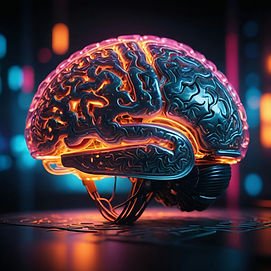In recent years, the concept of manifestation has captured widespread attention, from self-help books to social media influencers. At its core, manifestation involves bringing your desires and goals into reality through focused intention, positive affirmations, and visualisation. For me – embracing an abundant and positive mindset has been transformative! Recently, I faced the challenge of healing from a torn calf (soon after recovering from a broken toe!), which definitely tested my resilience and patience.
By reframing my mindset and focusing on gratitude, I found the strength to overcome obstacles and achieve the best possible outcomes in both my work and personal life. I have been using this as fuel within my interactions with others, hoping I can pay it forward.
But how does this actually all work?

The Power of Manifestation: A Neuroscientific Perspective
Manifestation, often dismissed as pseudoscience, actually has roots in well-established neurological processes. Studies over the past decade have increasingly supported the idea that our thoughts can significantly influence our reality. Dr. Tara Swart, a neuroscientist and leadership coach, explains that the brain’s plasticity allows us to reshape our thought patterns and, consequently, our experiences. By visualising a desired outcome, we can stimulate neural pathways that prime us for success.
A 2016 study published by Schultz on neuroscience highlighted how focused attention on goals activates the brain’s reward system, releasing dopamine. This neurotransmitter not only makes us feel good but also reinforces the behaviours that move us closer to our goals. Thus, the practice of manifestation can be seen as a way to harness this neural reward system to our advantage. By understanding the neural mechanisms behind focused attention and goal visualisation, we can better appreciate how our thoughts influence our reality.
Gratitude and Positive Affirmations: The Fuel for Manifestation
Gratitude and positive affirmations are crucial components of manifestation, and their effectiveness is backed by substantial scientific evidence. Research has shown that regularly practicing gratitude can increase overall well-being and life satisfaction. A 2017 study in ‘Frontiers in Psychology’ found that gratitude activates regions of the brain associated with dopamine production and cognitive restructuring, which helps us perceive the world more positively.
Positive affirmations, on the other hand, are statements that reinforce a desired self-perception or outcome. When we repeat affirmations, we strengthen the neural pathways related to those beliefs. Over time, this can lead to changes in our self-concept and behaviour. This phenomenon, known as self-affirmation theory, has been extensively studied, by Falk and colleagues (2015), demonstrating how affirmations can reduce stress and improve problem-solving abilities.

However, the real magic happens when you bring your affirmations to life! Instead of mechanically repeating them like you’re stuck in school detention or chanting them like a mantra, try to embody them fully. Neuroscience shows that engaging our emotions, senses, and visualisation techniques can supercharge the effects of affirmations. Imagine your desired outcomes vividly, feel the joy and excitement as if they’ve already happened. This approach boosts the brain’s neuroplasticity, making those positive changes stick. So, dive in with all your senses and watch your affirmations transform your life!
Perfectionism and Unrelenting Standards: The Hidden Obstacles
While manifestation and gratitude can lead to positive change, perfectionism often stands in the way. Perfectionism, characterised by unrelenting standards and a fear of failure, is not just a personality quirk—it’s deeply intertwined with our cognitive and emotional processes. Schema therapy, a form of cognitive-behavioural therapy, identifies perfectionism as a maladaptive schema that can lead to chronic stress and dissatisfaction.
In today’s digital age, social media amplifies perfectionist tendencies. Platforms like Instagram and Facebook present curated versions of reality, fostering unrealistic expectations and comparison. Curran and Hill (2019) found that social media use is associated with higher levels of perfectionism, as users strive to match the perceived perfection of others’ lives.
Perfectionism is also closely linked to manipulation and control. People with perfectionist tendencies often try to control their environment and the people in it to meet their high standards, which can lead to strained relationships and increased anxiety. Dr. Brene Brown, a research professor and author, points out that perfectionism is the opposite of vulnerability. By striving for perfection, individuals shield themselves from the vulnerability required to form genuine connections.
Embracing Vulnerability: The Antidote to Perfectionism
Overcoming perfectionism involves embracing vulnerability—a concept that Dr. Brene Brown has extensively explored. In her book, ‘Daring Greatly’, Brown argues that vulnerability is not a weakness but a source of strength and courage. By accepting our imperfections and opening ourselves up to failure, we can build resilience and foster deeper connections with others.

Neuroscientific research supports these claims. A 2018 study in The Journal of Positive Psychology found that individuals who embrace vulnerability and practice self-compassion have lower levels of stress and higher levels of life satisfaction. Lowering stress physically decreases the release of negative hormones like cortisol, which are linked to disease. Conversely, positivity can boost positive hormones like oxytocin, leading to better cognitive and physical health. This suggests that by letting go of perfectionism and accepting ourselves as we are, we can lead more fulfilling and healthier lives.
Integrating Neuroscience into Daily Practice: Manifestation, Gratitude and Combatting Perfectionism
The interplay between manifestation, gratitude, perfectionism and vulnerability is complex but illuminating. By understanding the neuroscience behind these concepts, we can leverage this knowledge to enhance our mental well-being and achieve our goals. Here are some practical steps to integrate these insights into your daily life:

- Visualise Your Success: Take a few minutes each day to vividly imagine your goals. Picture every detail: the steps you’ll take, the obstacles you’ll overcome, and the exhilarating emotions you’ll feel when you achieve them. Make this a present, vibrant, sensory-rich experience that excites and motivates you.
- Celebrate Gratitude: Keep a gratitude journal and jot down three things you’re grateful for each day. Reflect deeply on why these moments matter to you and how they enrich your life. Feel the warmth and positivity that gratitude brings.
- Empower with Affirmations: Select powerful affirmations that resonate with your goals. Repeat them daily with conviction, imagining the success and fulfillment they represent. Make them specific, positive, and present-tense to truly embed them in your psyche.
- Conquer Perfectionism: When perfectionist thoughts creep in, challenge them head-on. Embrace the beauty of imperfection and allow yourself to make mistakes. Each mistake is a learning opportunity, a step towards growth and mastery.
- Embrace Your True Self: Open up about your fears and imperfections with trusted friends or a therapist. Practice self-compassion and remind yourself that vulnerability is a strength. Celebrate your authentic self, imperfections and all.
By applying these practices, you can harness the power of your mind to create the life you desire. Understanding the neuroscience of manifestation, gratitude, and overcoming perfectionism can profoundly transform your life. If you want to dive deeper into these topics or have a free consultation, I’m available to chat. My enthusiasm and passion for these topics drive me to discuss them day in and day out, so no hesitations, please! Reach out to me at +61 466 160 115 or gabrielle@onpointpsychotherapy.com. Let’s explore your journey together!
References
Balconi, M., & Fronda, G. (2021). Gratitude affects inter-subjective synchronicity for cognitive performance and autonomic responsiveness. Frontiers in Psychology, 12, 574983. https://doi.org/10.3389/fpsyg.2021.574983
Curran, T., & Hill, A. P. (2019). Perfectionism is increasing over time: A meta-analysis of birth cohort differences from 1989 to 2016. Personality and Individual Differences, 138, (pp. 92-99). https://doi.org/10.1016/j.paid.2018.09.029
Falk, E. B., O’Donnell, M. B., Cascio, C. N., Tinney, F. J., Kang, Y., Lieberman, M. D., & Taylor, S. E. (2015). Self-affirmation activates the ventromedial prefrontal cortex: Implications for stress reduction and problem-solving. Social Cognitive and Affective Neuroscience, 10(2), (pp. 209-217). https://doi.org/10.1093/scan/nsu085
Fox, G. R., Kaplan, R., Damasio, H., & Damasio, A. (2015). The impact of gratitude on neural activation and cognitive restructuring. Frontiers in Psychology, 6, 1491. https://doi.org/10.3389/fpsyg.2015.01491
Kong, F., Heller, A. S., van Reekum, C. M., & Sato, W. (2020). Positive neuroscience: the neuroscience of human flourishing. Frontiers in Human Neuroscience, 14, 47. https://doi.org/10.3389/fnhum.2020.00047
Laurent, H. K., Gilliam, K. S., Bruce, L. R., & Fisher, P. A. (2017). The effects of self-soothing practices on stress and emotional regulation. Psychological Science, 28, (9), (pp. 1340-1350). https://doi.org/10.1177/0956797617706358
Neff, K. D., & Germer, C. K. (2018). The benefits of vulnerability and self-compassion on stress and life satisfaction. The Journal of Positive Psychology, 13(3), (pp. 292-302). https://doi.org/10.1080/17439760.2017.1351427
Schultz, W. (2016). Dopaminergic reward system and goal-oriented behavior. Nature Reviews Neuroscience, 17(3), (pp. 191-204.) https://doi.org/10.1038/nrn.2016.135
Swart, T. (2019). The Source: Open Your Mind, Change Your Life. Penguin Life.
Gabrielle-Beth Volovsky
Psychotherapy and Counselling Professional
Certified PACFA Counsellor
